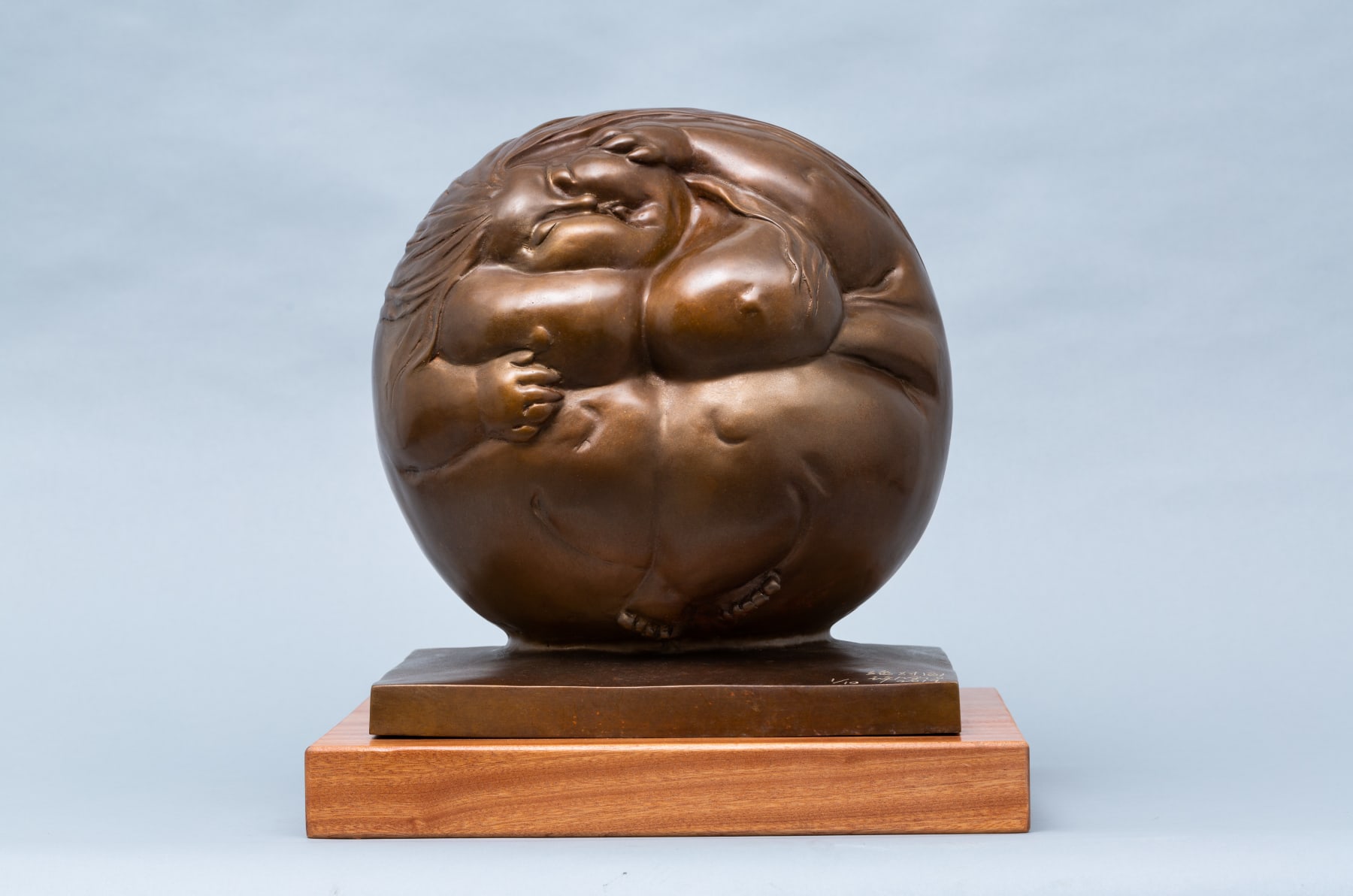Xu Hongfei 許鴻飛
Absolute 絕對圓, 2019
Bronze 青铜
35 x 30 x 35 cm
A/P 3/5
Copyright The Artist
The Chubby Women sculptures convey Xu Hongfei’s fundamental beliefs about society. They represent the artist’s desire to break free from an outdated mould. In Chinese history and culture, being overweight...
The Chubby Women sculptures convey Xu Hongfei’s fundamental beliefs about society. They represent the artist’s desire to break free from an outdated mould. In Chinese history and culture, being overweight is associated with unattractiveness. Women who are lean or athletic are considered the benchmark for being beautiful. By making his Chubby Women figures independent subjects, the artist is questioning the consecrated standards of beauty. Instead of depicting the overweight figures as unworthy, the artist makes his figures cheerful, active, comical and strong. Absolute (2019) is an example of this. It depicts a chubby woman compressed into a round form. It reflects a breakthrough in Xu’s thinking because it is more abstract and symbolic than his previous works. Despite this, the sculpture still retains the spirituality of the chubby figure. Absolute (2019) does not aim for naturalism in proportion or shape. Instead, it is a mesmerising cypher of how the artist believes beauty comes in different shapes and sizes. This fleshy representation of the female form can be found in Western art history. European masters like Titian, William Etty, Jean-Auguste-Dominique Ingres often portrayed the female form as plump or curvaceous. Like Boisserees, Xu finds meaning in past Western art that is relevant to the present. By doing so and creating sculptures like Absolute (2019), he is able to broaden the Chinese vision of beauty.
西方很多藝術名家例如畢加索、提香等,都喜愛以豐滿的女人作為繆斯,甚至中國的唐代以圓胖女子作為美的標準。《絕對圓》 是許鴻飛2019年的新作。此作除了承接「肥女人」一貫的雕刻風格外,他塑造人體的功架已昇華到更高的層次。
許鴻飛的「肥女人」雕塑多半帶有逗趣的戲劇性,而「肥女人」便是主題中的主角,通常以小動物或是其他人物作為配角,主次分明。但是這次《絕對圓》的主體就只有——一個球形般的「肥女人」。許鴻飛沒有配置太多枝節,整個雕塑的造形直接、簡練和樸實。他將人體的形態變得更抽象,只是將「肥女人」的圓滑與溫潤更鮮明地表達出來,讓觀眾的目光只集中於雕塑的本質與線條。
東方人自古對於「圓滿」這概念十分重視,「圓」不但是象徵了「面面俱圓」的處世之道,還有對於宇宙萬物「生生不息」的寄想。例如蘇軾的《水調歌頭》裡,提及「圓滿」這一概念是人生一大法則:「人有悲歡離合,月有陰晴圓缺,此事古難全。但願人長久,千里共嬋娟。」
許鴻飛除了吸收西方的雕塑技巧以外,他還是保留著東方文人的雅緻,並將中西交融的概念灌注於作品之中。再者,他以樂觀積極的態度面對「月有陰晴圓缺,此事古難全」這種說法,同時以正面的理念抒發「但願人長久,千里共嬋娟。」的快樂結局。
西方很多藝術名家例如畢加索、提香等,都喜愛以豐滿的女人作為繆斯,甚至中國的唐代以圓胖女子作為美的標準。《絕對圓》 是許鴻飛2019年的新作。此作除了承接「肥女人」一貫的雕刻風格外,他塑造人體的功架已昇華到更高的層次。
許鴻飛的「肥女人」雕塑多半帶有逗趣的戲劇性,而「肥女人」便是主題中的主角,通常以小動物或是其他人物作為配角,主次分明。但是這次《絕對圓》的主體就只有——一個球形般的「肥女人」。許鴻飛沒有配置太多枝節,整個雕塑的造形直接、簡練和樸實。他將人體的形態變得更抽象,只是將「肥女人」的圓滑與溫潤更鮮明地表達出來,讓觀眾的目光只集中於雕塑的本質與線條。
東方人自古對於「圓滿」這概念十分重視,「圓」不但是象徵了「面面俱圓」的處世之道,還有對於宇宙萬物「生生不息」的寄想。例如蘇軾的《水調歌頭》裡,提及「圓滿」這一概念是人生一大法則:「人有悲歡離合,月有陰晴圓缺,此事古難全。但願人長久,千里共嬋娟。」
許鴻飛除了吸收西方的雕塑技巧以外,他還是保留著東方文人的雅緻,並將中西交融的概念灌注於作品之中。再者,他以樂觀積極的態度面對「月有陰晴圓缺,此事古難全」這種說法,同時以正面的理念抒發「但願人長久,千里共嬋娟。」的快樂結局。
1
之
43
